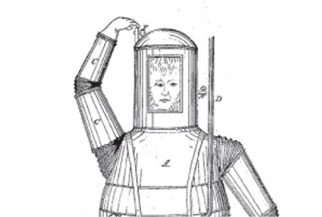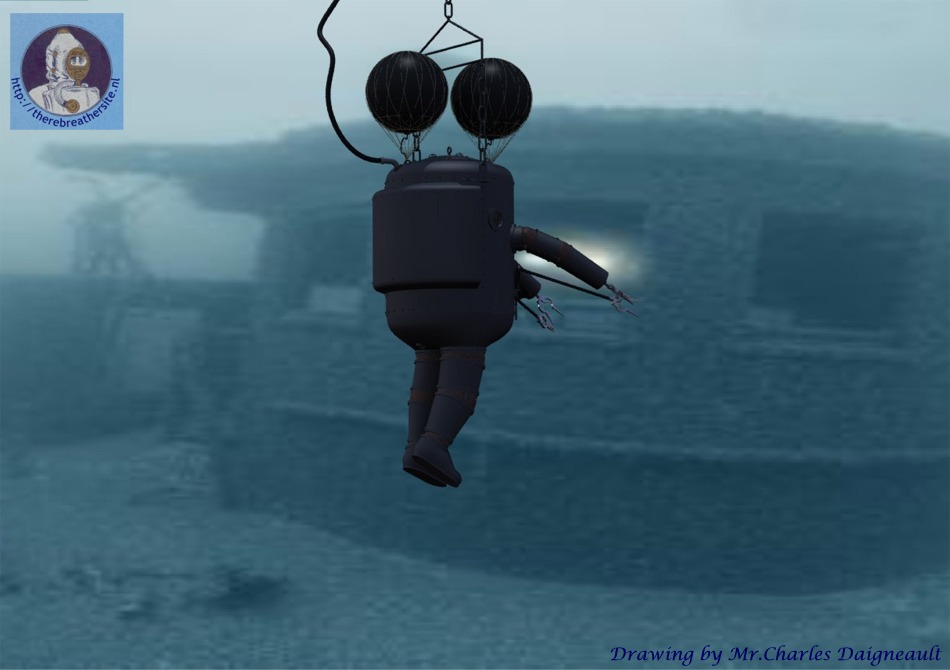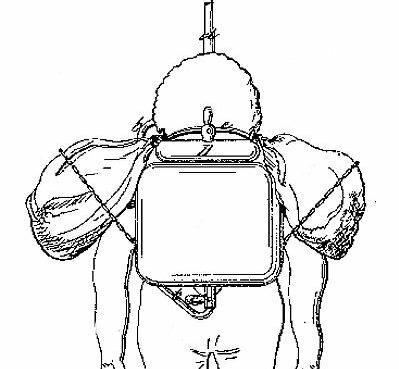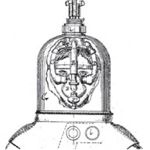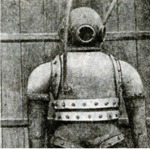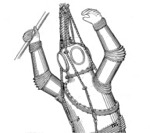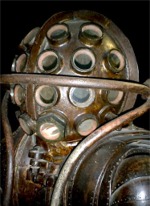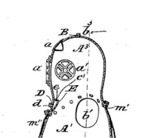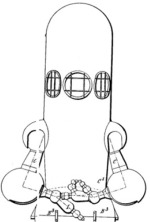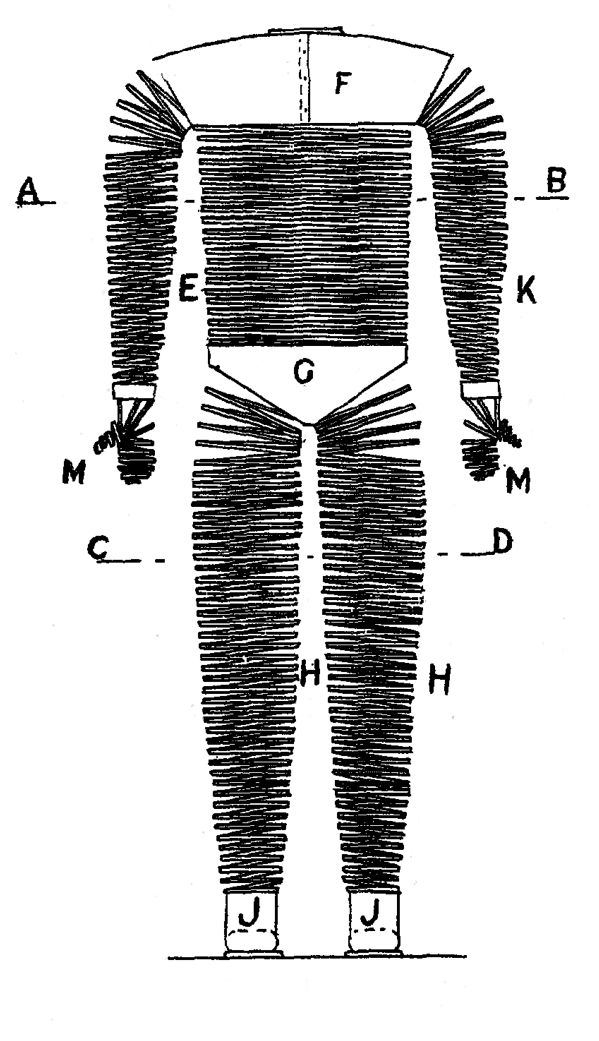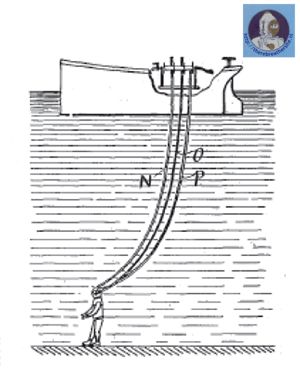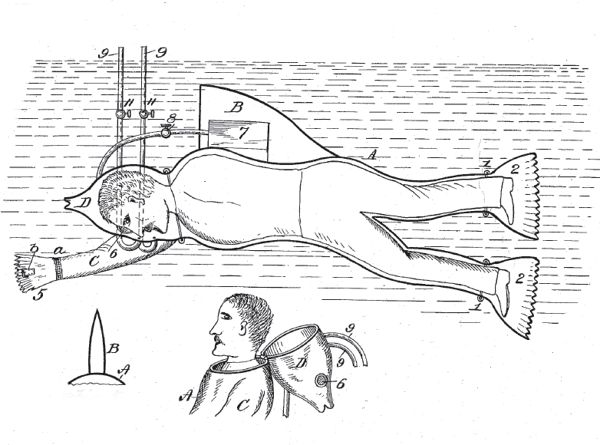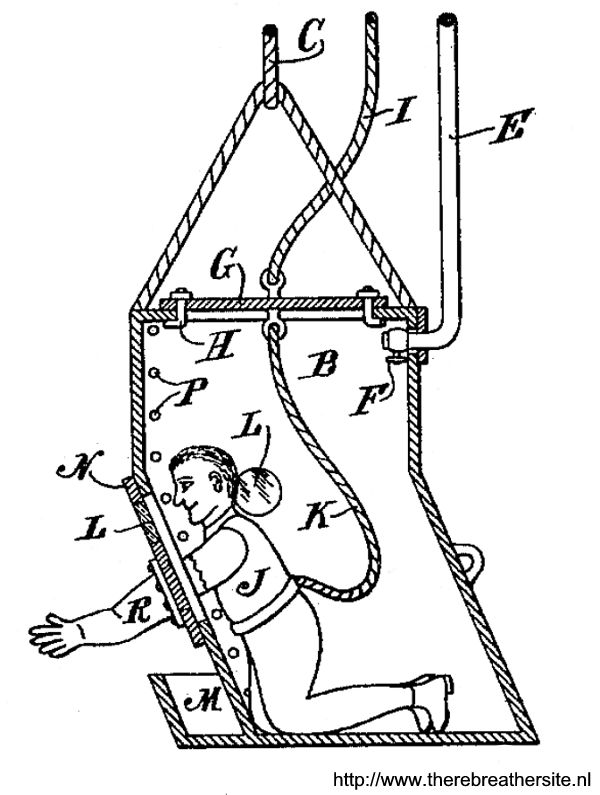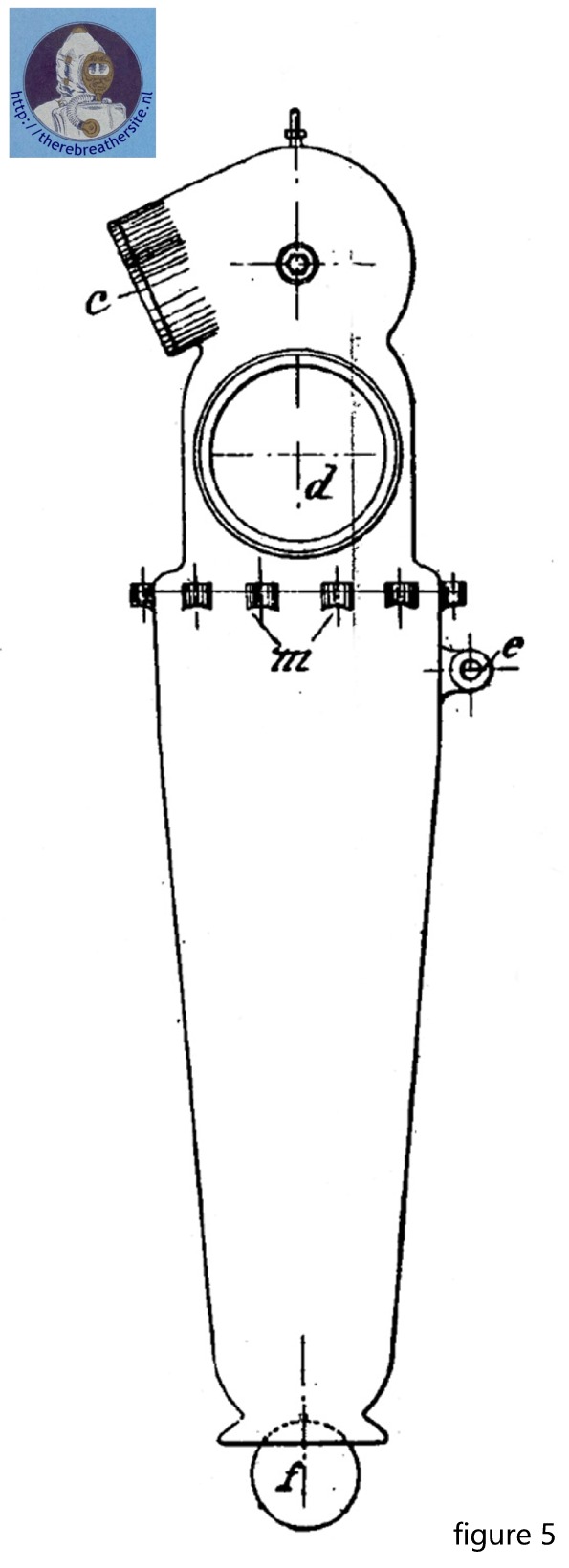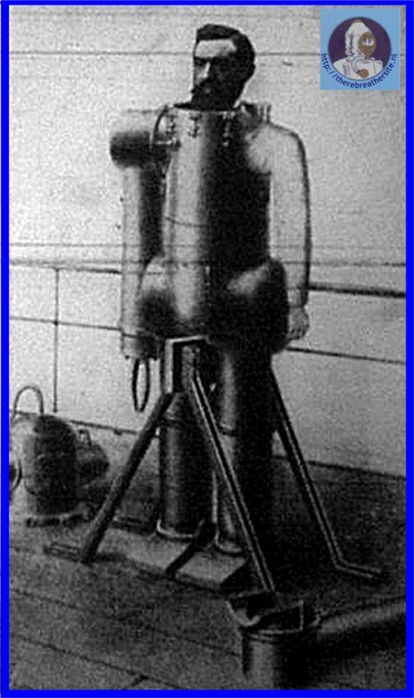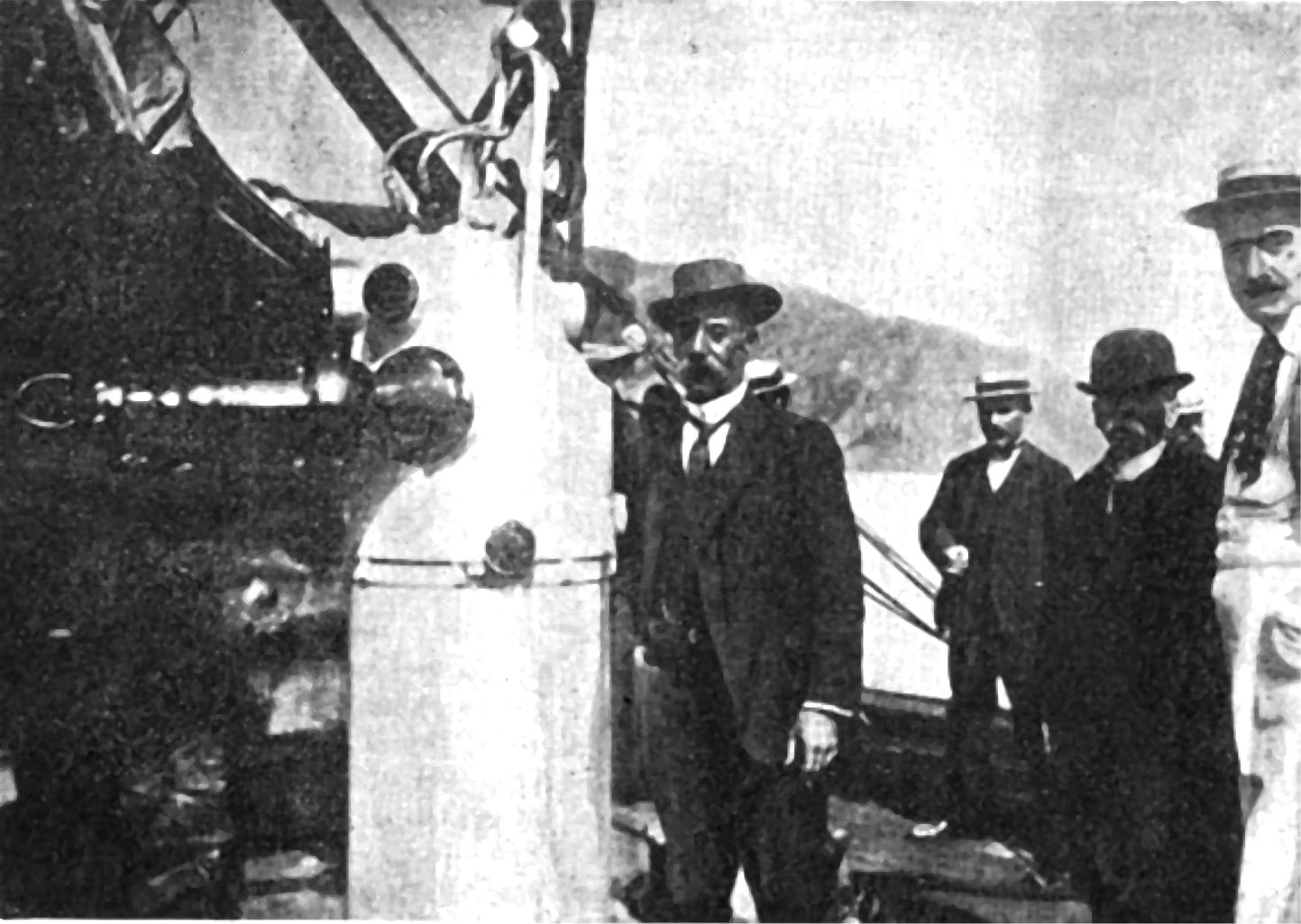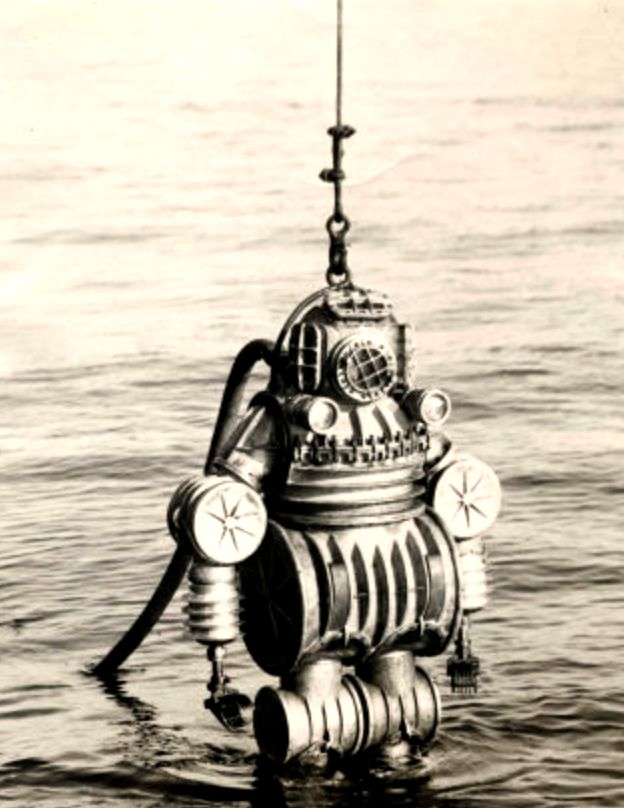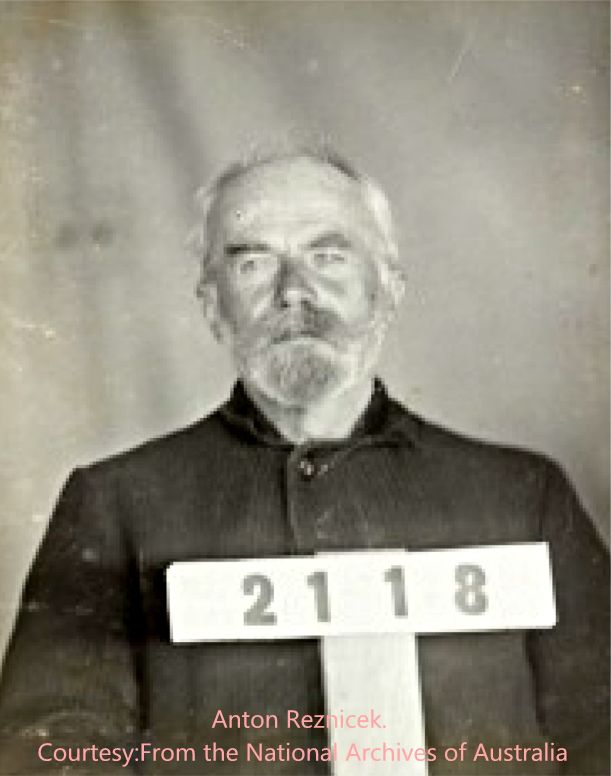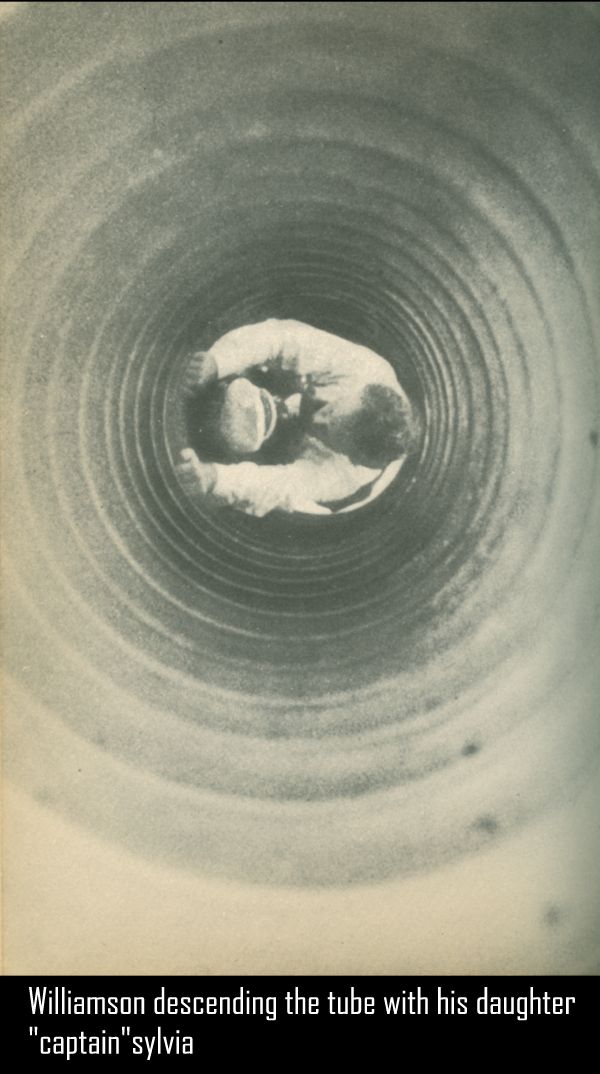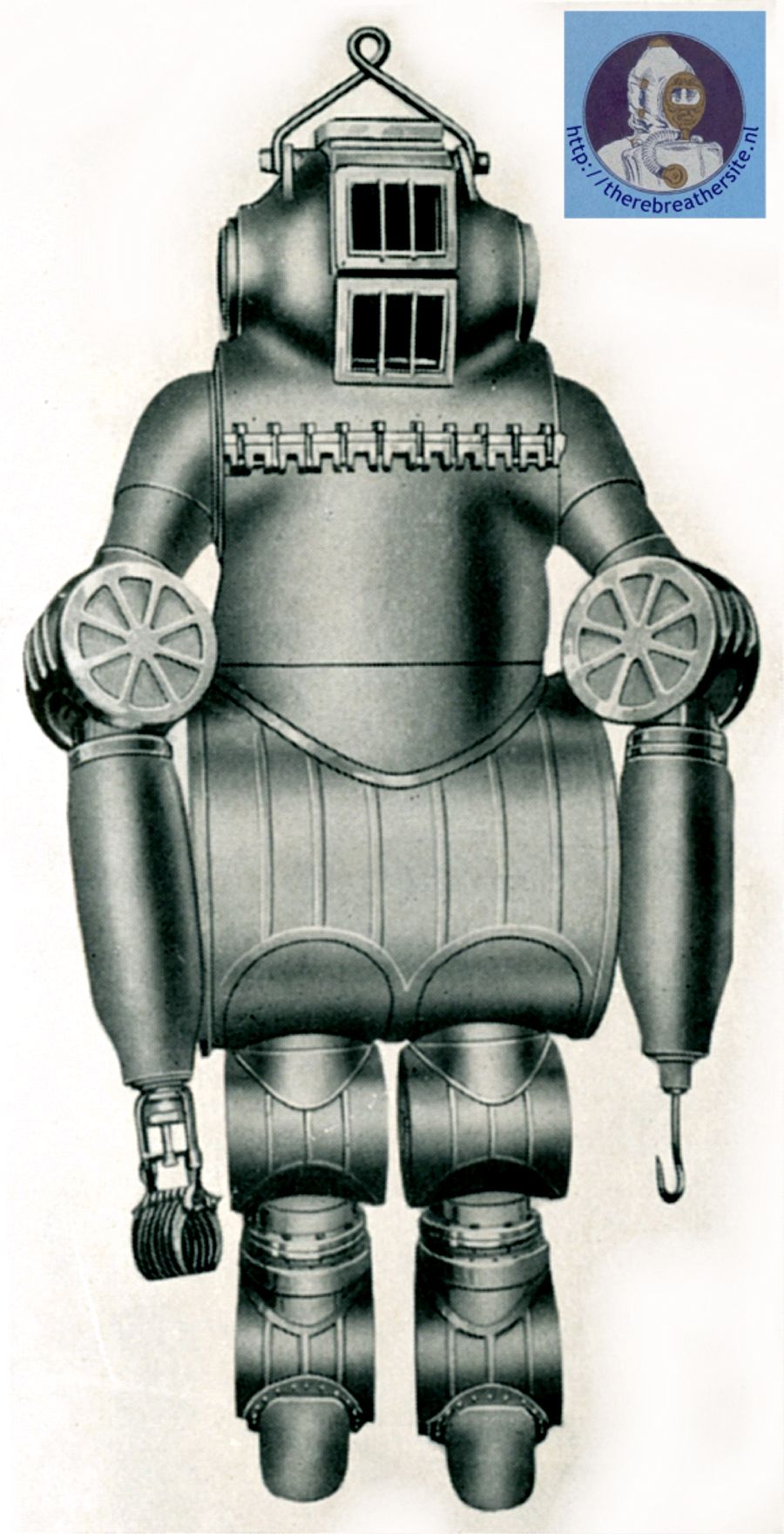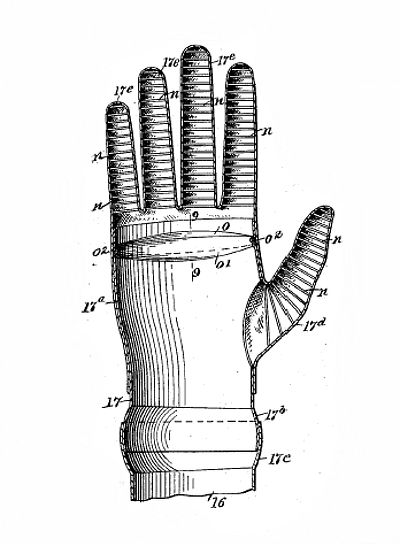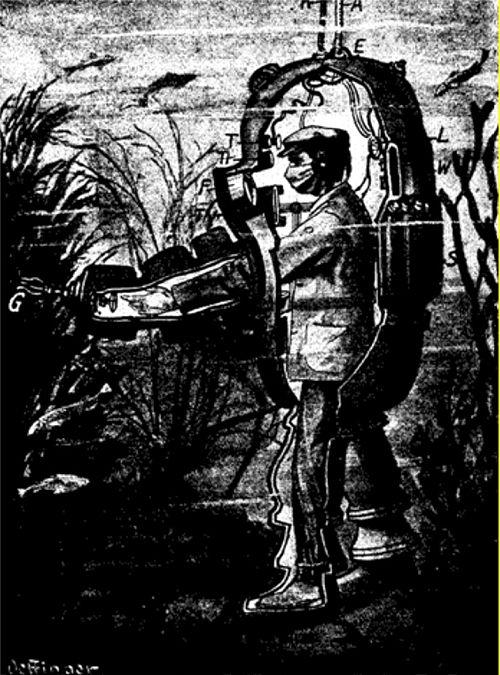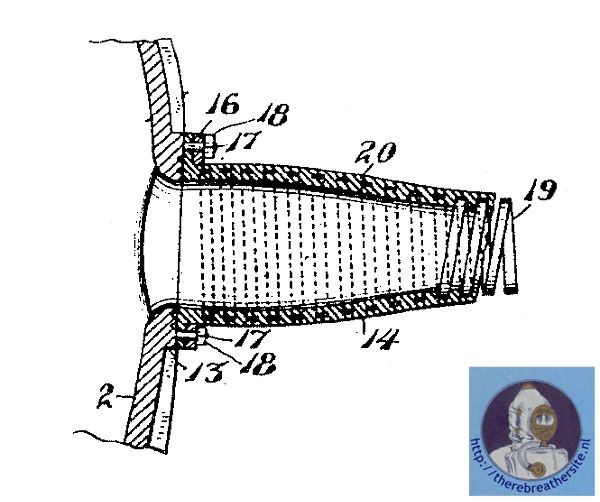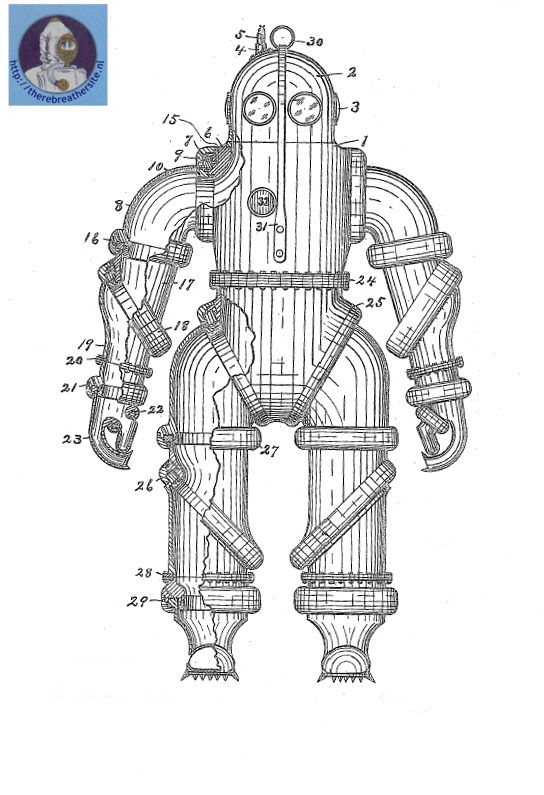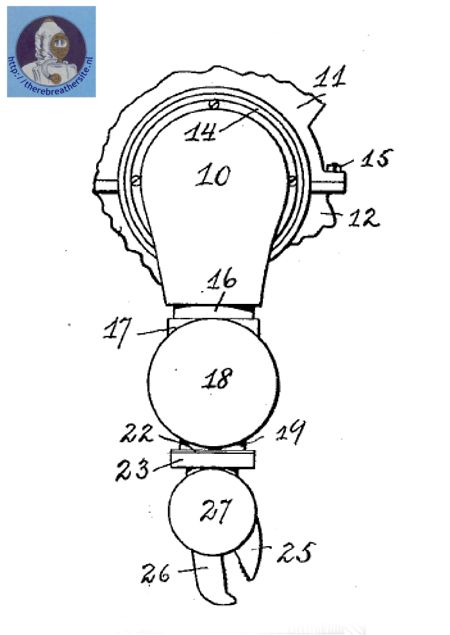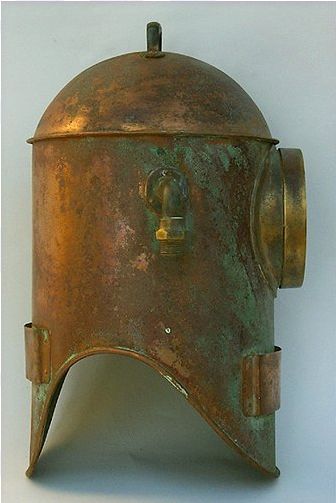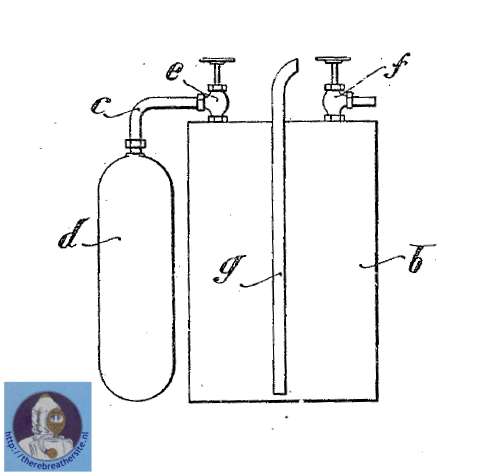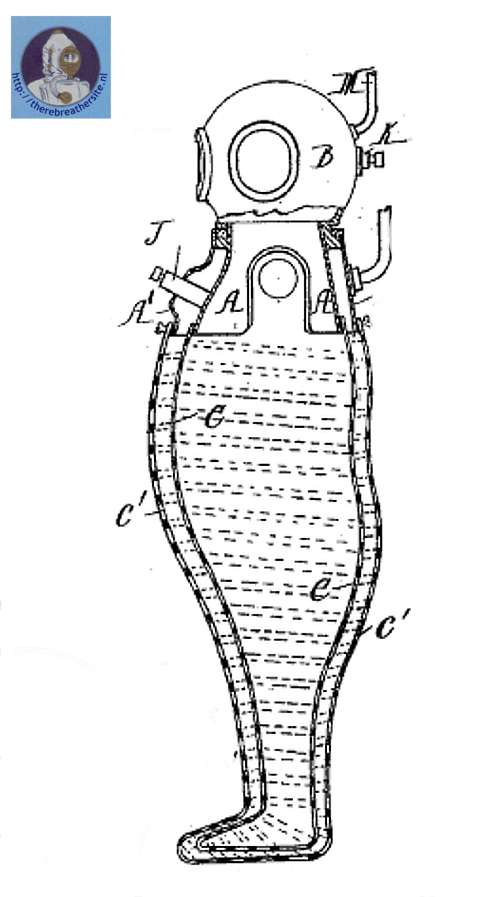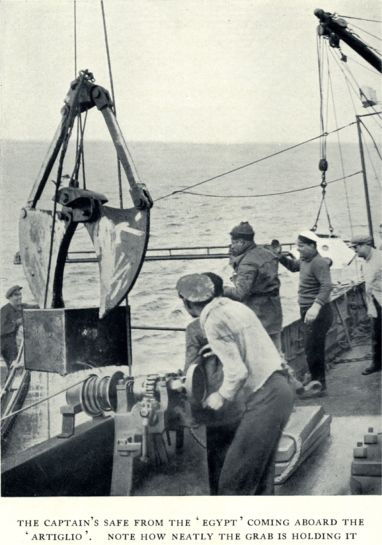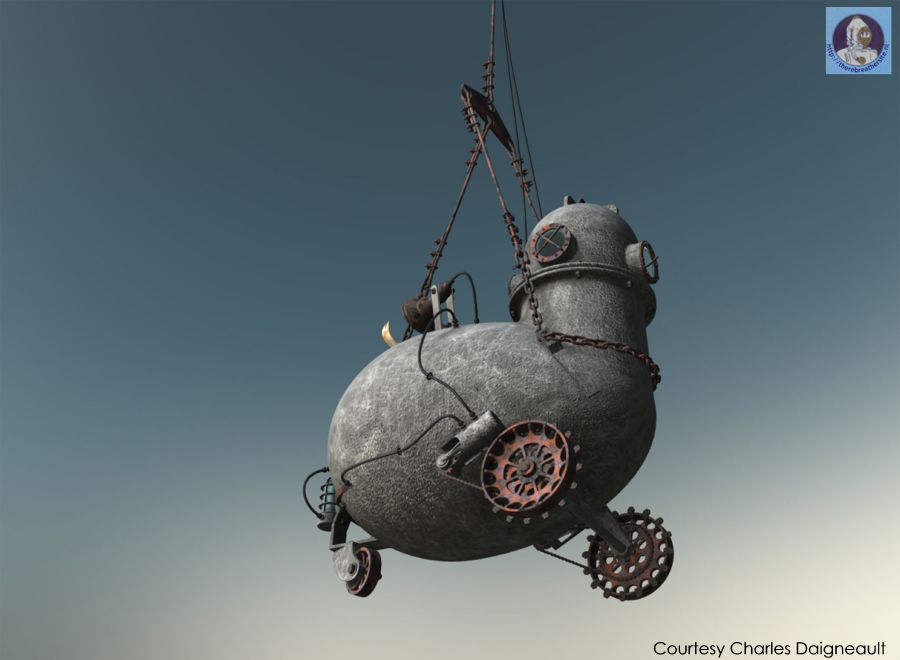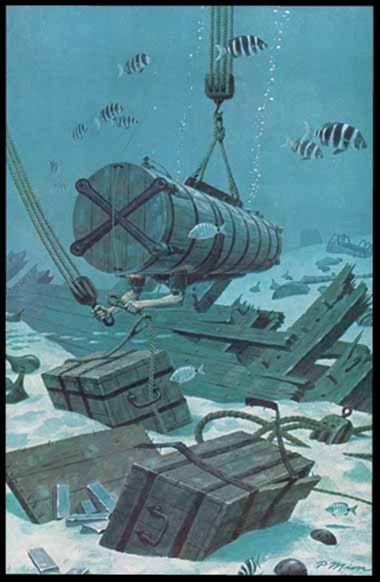
John Lethbridge (1675–1759) invented the first underwater diving machine in 1715. He lived in the county of Devon in South West England and reportedly had 17 children.

In the first half of the eighteenth century, a number of divers used the ‘barrel’ type of apparatus to salvage goods and treasure from the bottom of the sea. One of these was Jacob Rowe, a man of many parts: sea captain, engineer, inventor, author, and diver, but it is as a diver that he is now remembered.
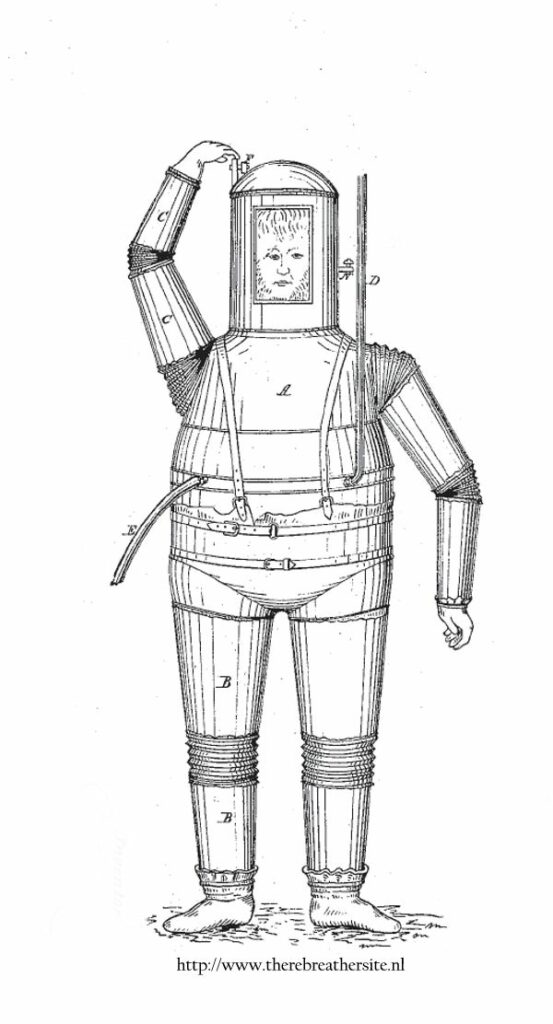
Taylor, 1838 (U.K.) – W.H. Taylor designed the first known armoured diving suit with articulating joints in 1838.
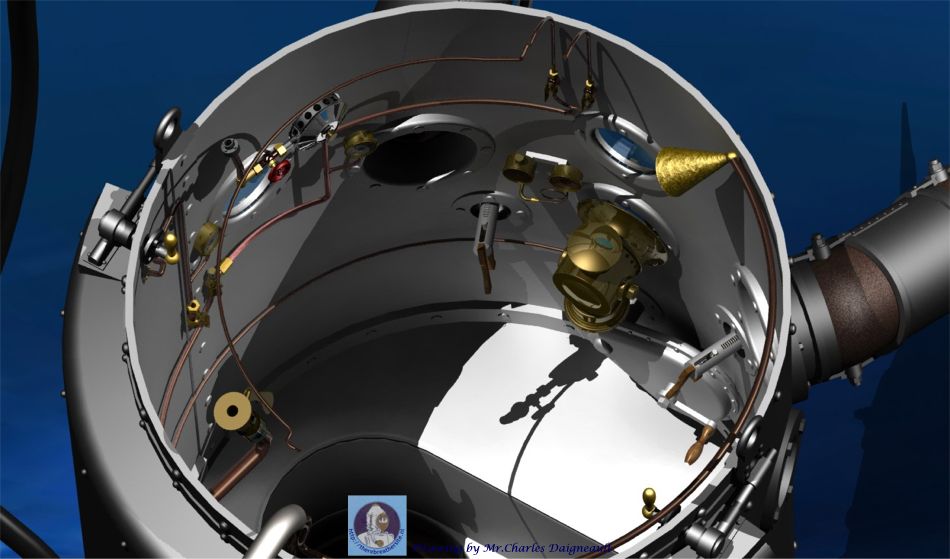
Phillips’ atmospheric diving suit was partly made of steal and partly made of cast iron.

In 1867, the American, Thomas Cato McKeen, added a large back-mounted air reservoir and fabricated a rubber suit. A ingenious part of McKeen’s apparatus was the addition of a second air system to inflate the suit and bring the diver to the surface.

These men designed and patented a very early ADS.No evidence was found it was ever actually build.
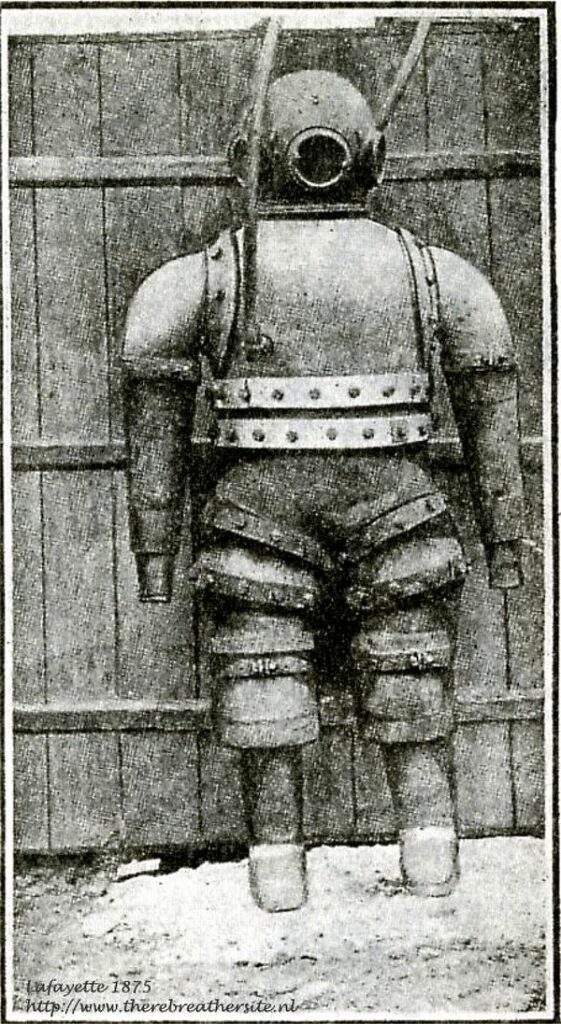
Siebe Gorman declared that a diving armour made of metal and leather was build in 1875 by Lafayette.
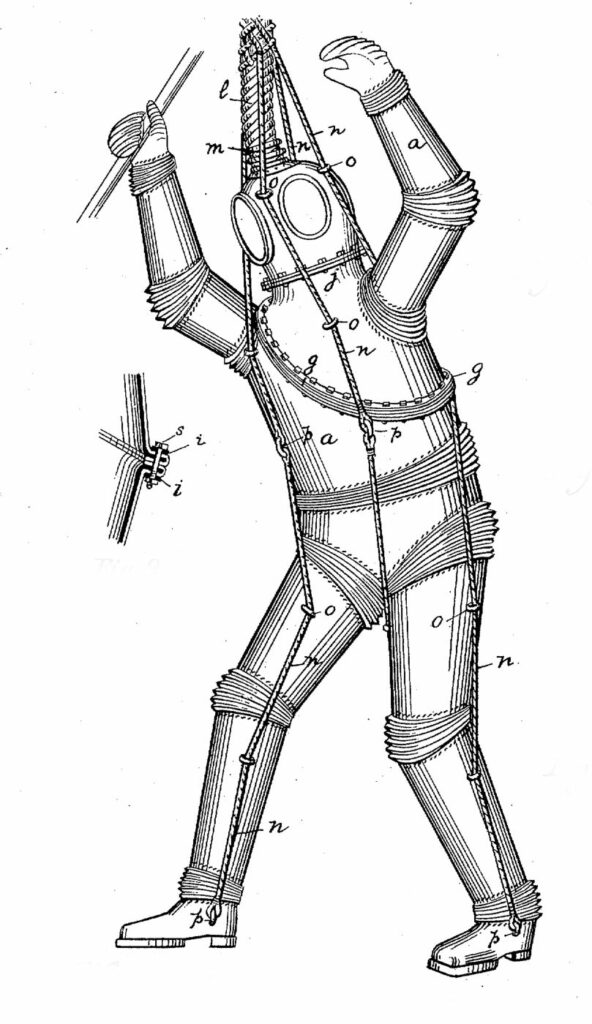
Tasker proposed to use a metal dress articulated with bellow joints, and to cover the whole with an external waterproof flexible dress of the ordinary pattern.
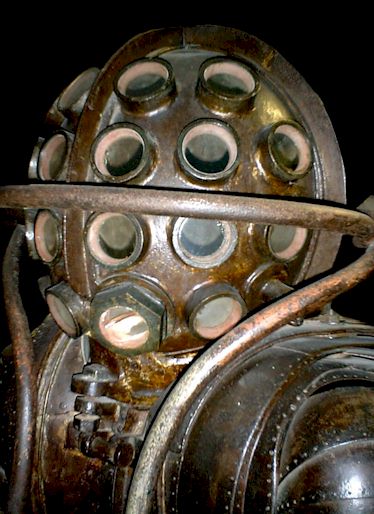
The French Brothers Alphonse and Theodore Carmagnolle build a very special atmospheric diving suit.
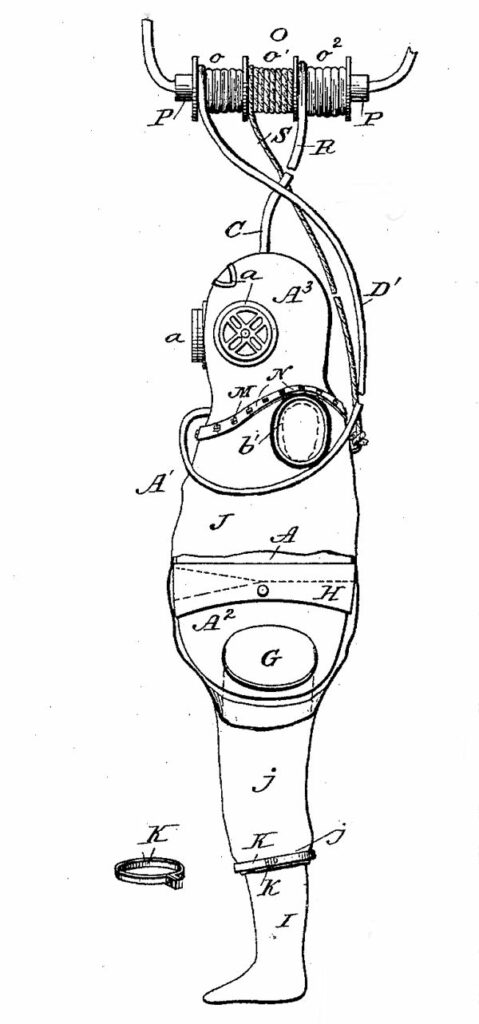
A Design patented in 1889 by Oliver Pelkey, is of little merit. It is not a completely armoured dress, the armour (in two portions) only covering the head and trunk.
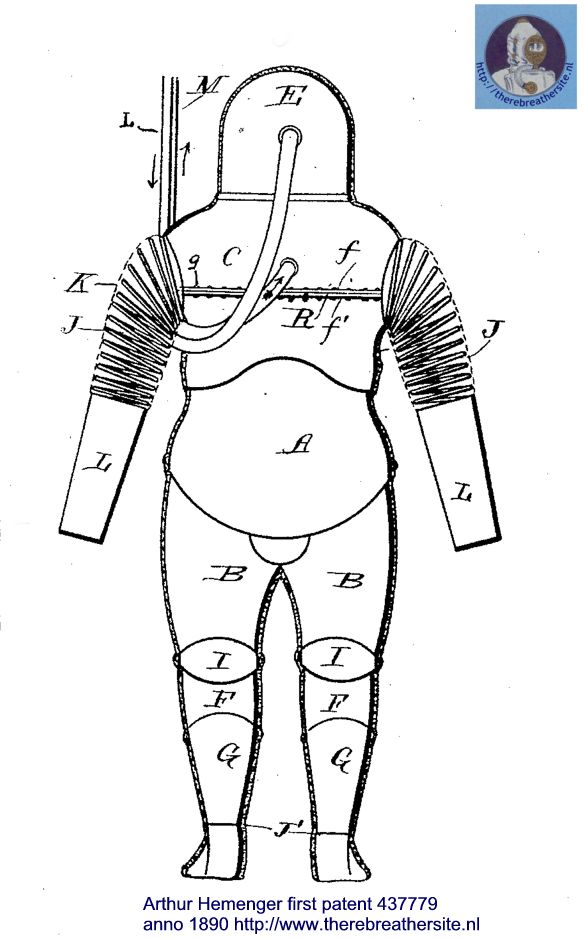
The armor is formed, however, of sheet brass, a somewhat curious material to select with steel available.

William Carey, of Southampton shows a plate suit, with ball-and-socket joints, and provision is made for easing the action of the joints by mounting them on ball or roller bearings.
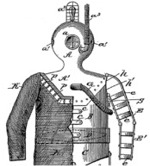
The suit consists of three pieces of armour, interlocking in the manner of a jig-saw puzzle, and covering the diver’s head and trunk.
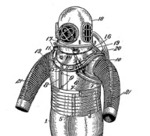
A metal casing is retained for the trunk, but both arms and legs are now covered with wire-stiffened waterproof cloth .
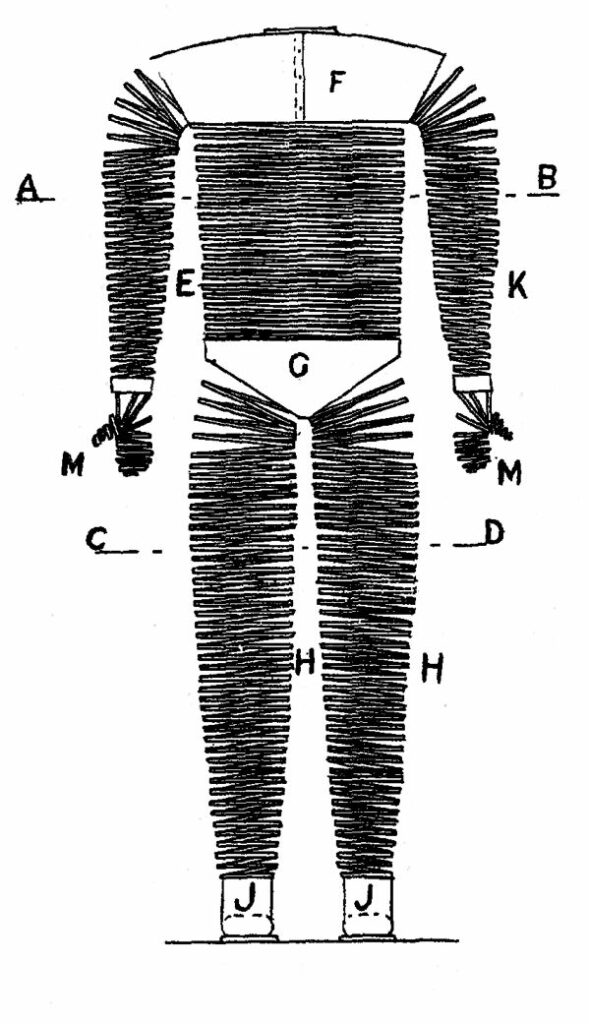
An apparatus for use in conjunction with diving dresses, the use of continuous spiral steel bands encircling the body, arms hands and legs, attached to metal shoulder, trunk and foot pieces forming a complete flexible casing capable of resisting great external pressure as described in the Specification and illustrated by drawings.

A deep-water diving dress of waterproof material, stiffened internally by spiral wires.

Murray and Stuart patented there suit in 1895. They used the old spiral technique and even used three layers to get the suit watertight.
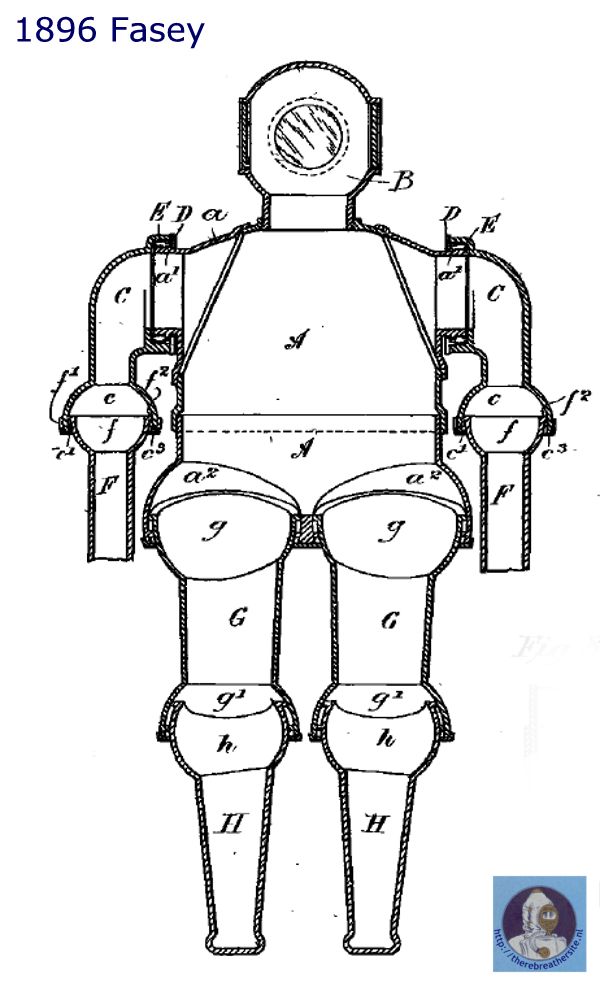
A dress proposed in 1896 by William Robert Fasey bears some resemblance to that of the Carmagnolles and to Careys. It is a plate dress with ball-and-socket joints, these being rendered watertight by leather packing.

The Buchanan-Gordon plan appears again in a design produced by William Becker, of Paderborn, in 1896. The dress is formed of waterproof material, stiffened internally by metal rings and a complicated system of flexible lacings.

In 1894 Buchanan and Gordon patented a diving dress. A later patent, taken out by Gordon alone, embodied various improvements in the fastening of the flexible material to the standing portions of the dress, such as the helmet; and it also provided for the use of jointed radius-rods running along the sleeves and trousers to prevent them from collapsing under pressure, while leaving them free to flex.
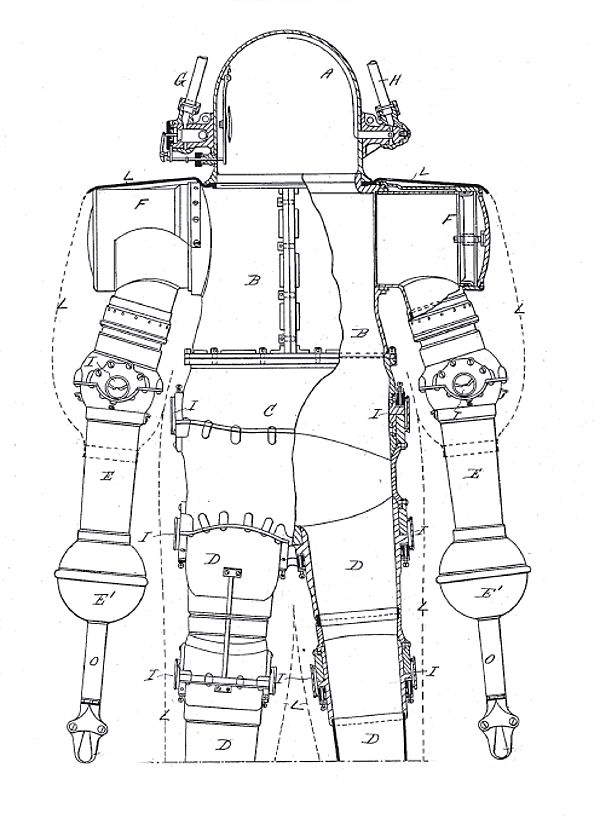
A very carefully designed dress was suggested in 1897 by John and George Day, of Maesteg, South Wales. The design provides for a completely armoured dress with ball-and-socket joints, kept watertight by “a suitable packing”.
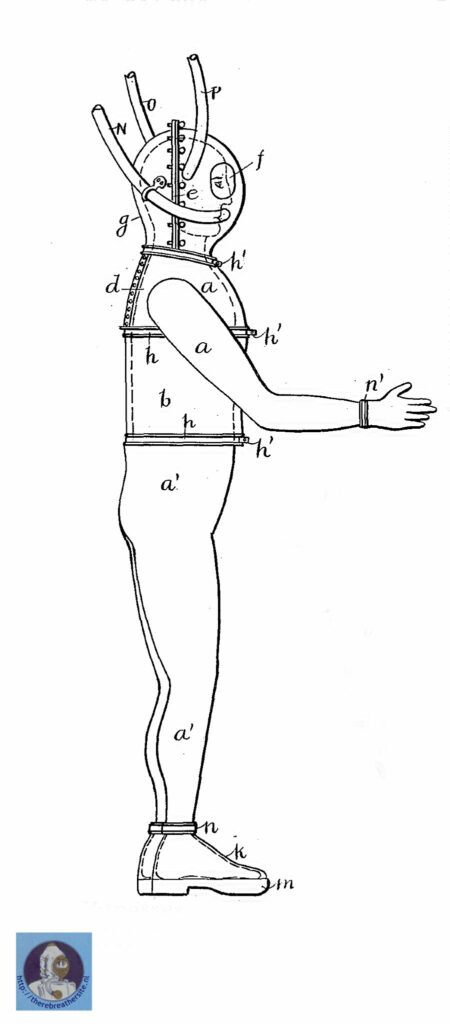
Very Little is known about the suit James Baker Pollard from Roanoke State of Virginia patented in 1897. His patent 587604 describes a diving suit or armor with a metallic head section, a flexible shoulder section and a metallic trunk section.
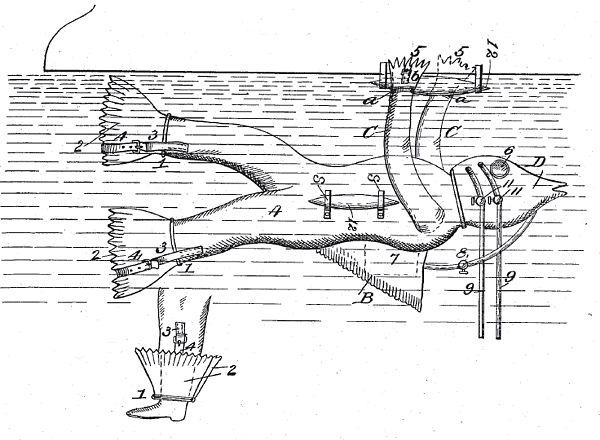
James J Devine patented a diving suit with a fish-like appereance. The main purpose was to transport a “torpedo” underwater.
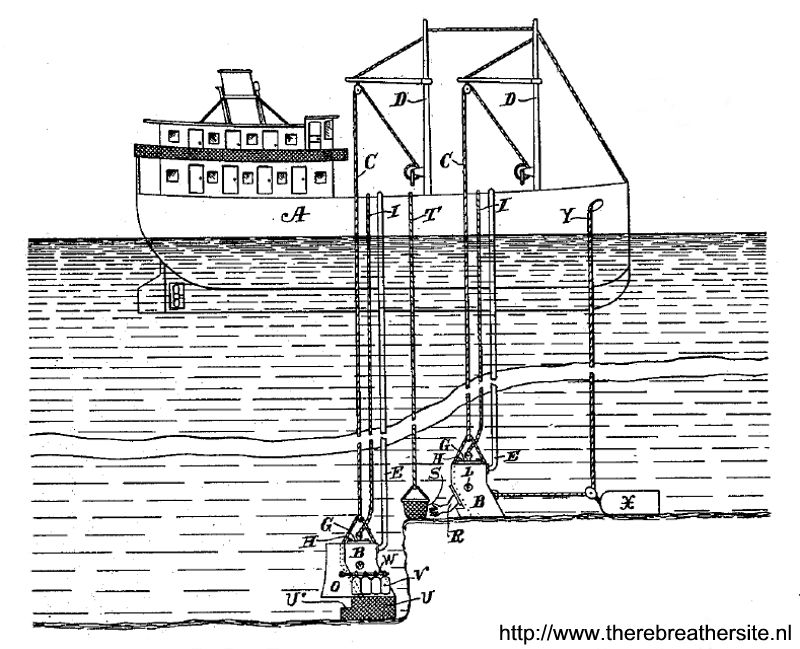
John Watson designed a diving bell with some interesting futures. The diving bell was equipped with a toolbox placed on the outside of the bell. Also Watson made an escape system for the diver.

Spiral wire armouring makes its appearance yet again in a design by Wichmann and Zopke in 1903.
This proposes to encircle the diver’s trunk and tights with flat steel spiral bands drawn tight by a handle-operated ratchet.
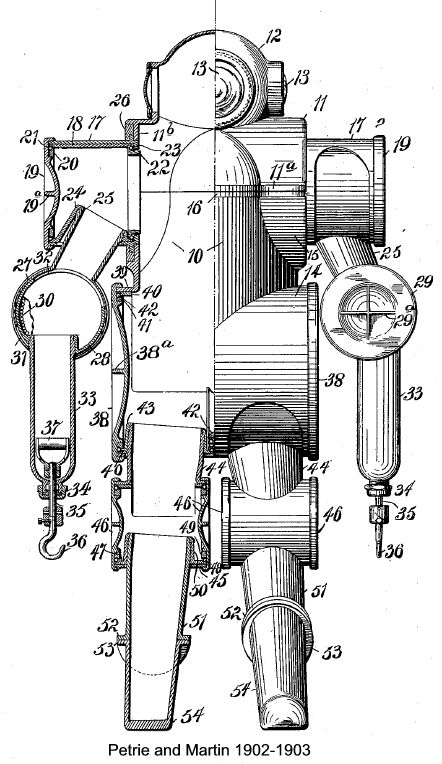
Enos B. Petrie, of U.S.A., designed in 1902 an armoured dress having ball-and-socket joints of a somewhat peculiar type. The “socket” portion of the joint was double, and passed on either side of the “ball” shell. The friction of such joints would be considerable. At the shoulders, annular joints were used, kept watertight by leather packing-rings. It was proposed that the whole dress should be enclosed in a rubber envelope.
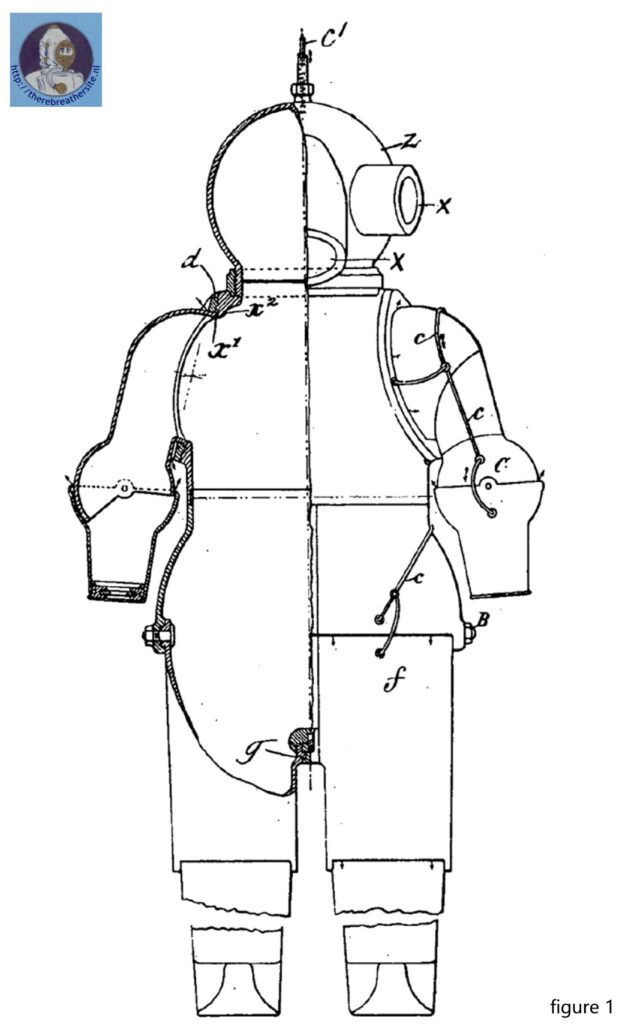
Giuseppe Restucci designed his first suit in 1904. The joints should be made watertight by means of overpressure. The patent he had in 1908 describes a more simple suit, mainly designed for salvaging small items from the seabed.
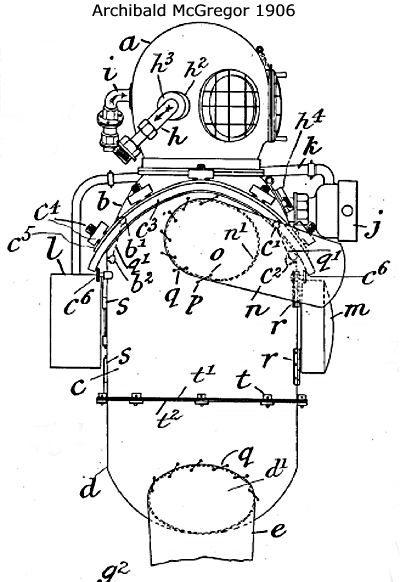
A patent taken out in 1906 by Archibald McGregor, of Queensland , recalls that of Murray and Stuart, since it provides the diver with three separate dresses.
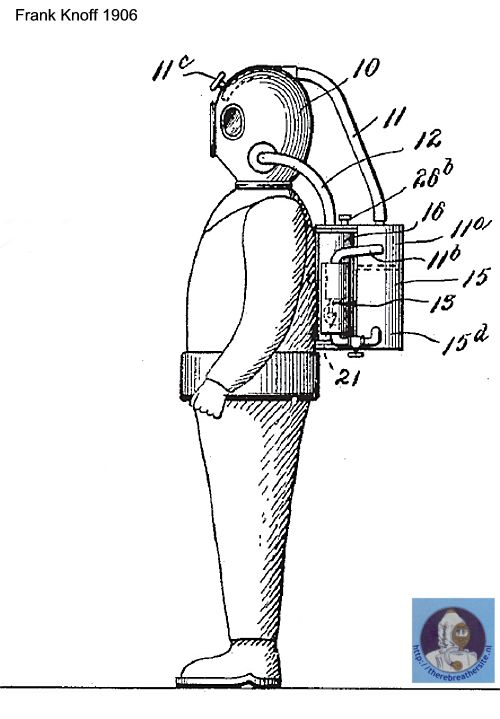
A metal casing is retained for the trunk, but both arms and legs are now covered with wire-stiffened waterproof cloth .
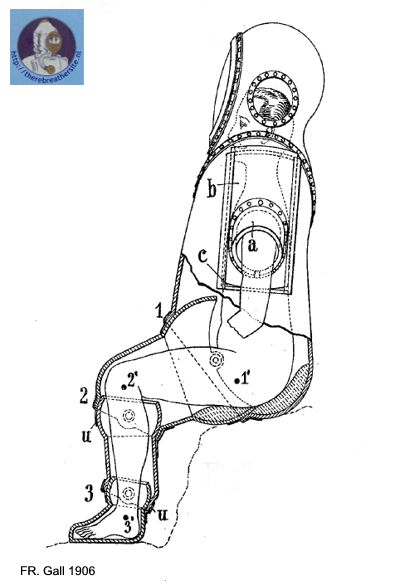
In 1906 Gall patented a dress of rather peculiar shape. Apart from this, it has no features of special interest, except that the diver was provided with armoured and jointed gloves. The main joints were of the ball-and-socket pattern.
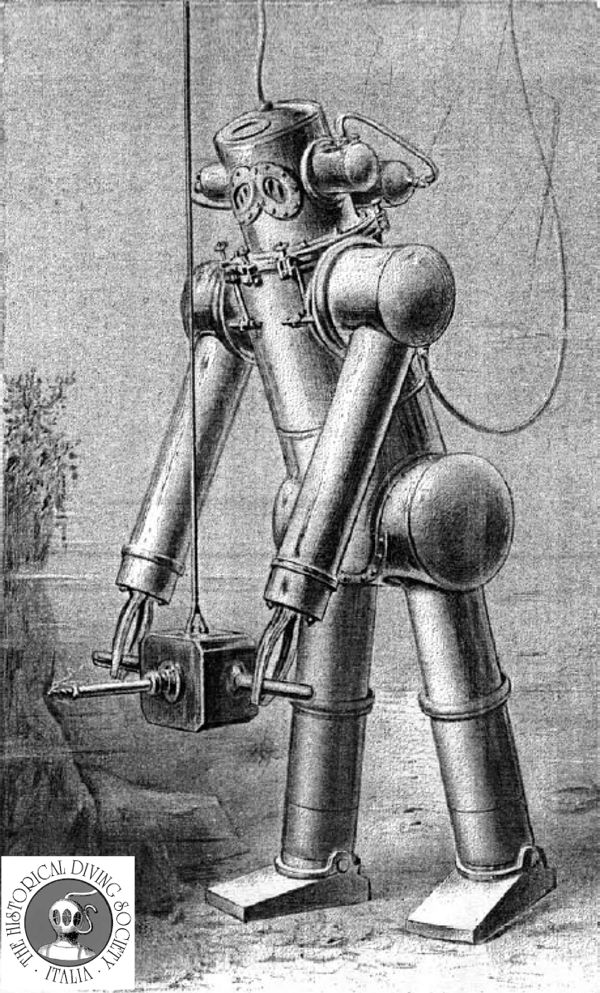
M. de Pluvy made one of the first regenerative type of atmospheric diving suits. Mr. Pluvy claimed to have made several dives to 100 meters with his suit. Although the joints were made of leather and rubber the suit seems to have worked.
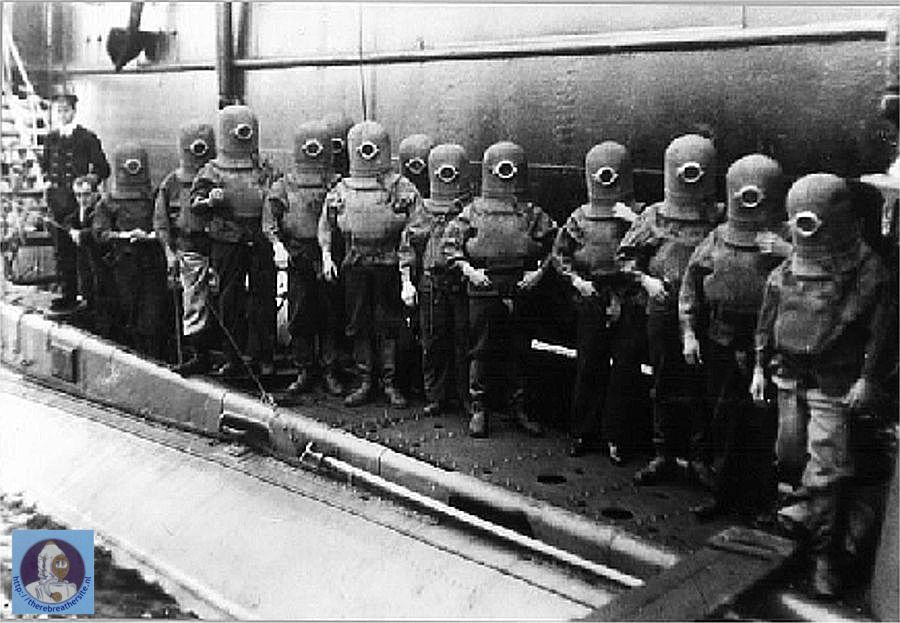
Although not directly related to atmospheric diving suits, the invention of a rebreather for escape purposes using Oxylithe is worth mentioning here.
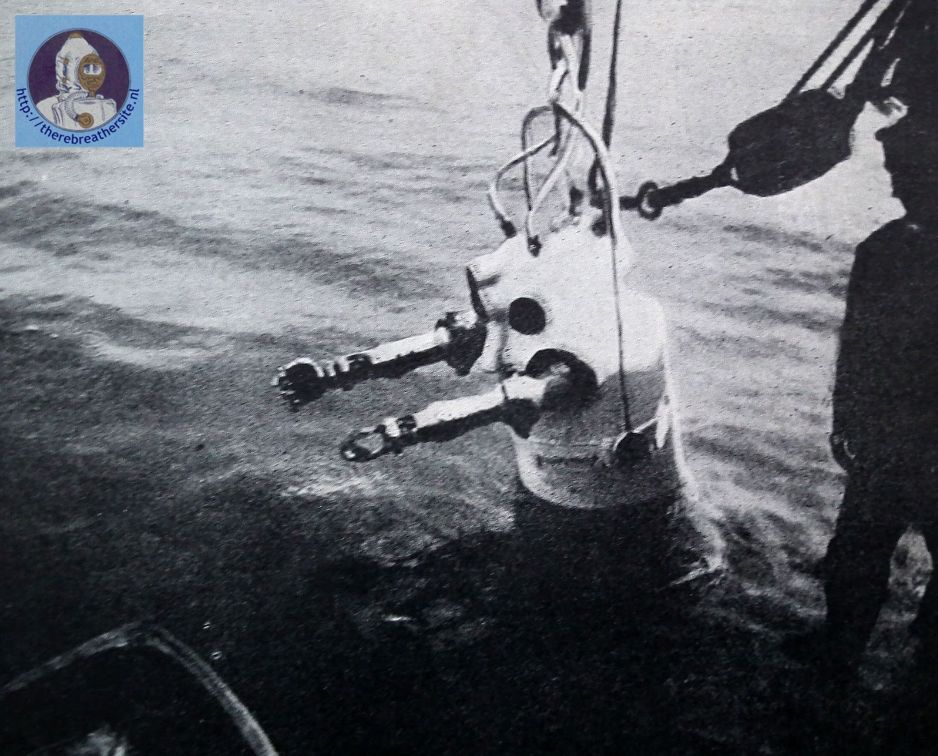
In 1904-1908, the retired technical chief of the Regia Marina, produced a very interesting drawings of three armoured diving suits. His specification showed an excellent knowledge of the problems and proposed viable, though sometimes very complicated, solutions.

In 1911 Enos B. Petrie patented a sort of umbilical, in fact the air hose had a communication wiring integrated
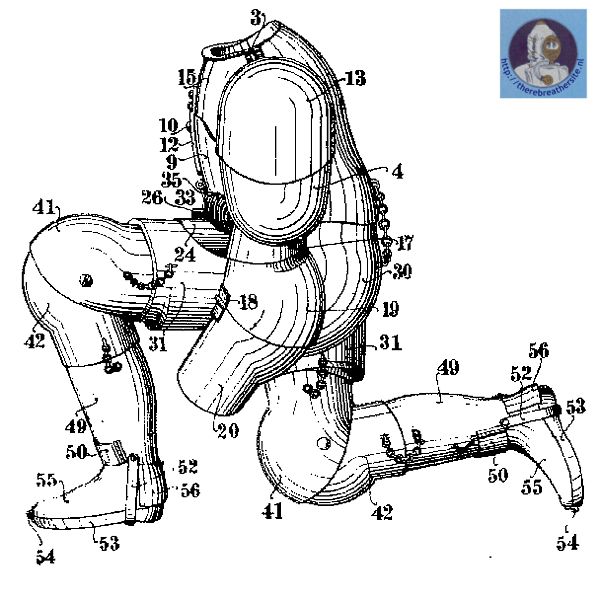
Anton Reznicek from Vienna patented his invention in 1911 as Austrian patent nr 50212. He described several ways to prevent the rubber cover of a diving armour to get entangled between the joints. By creating space in front of the joints and by using springs and cover plates covering the joints he claimed to have find a way to prevent the rubber to get between the joints.
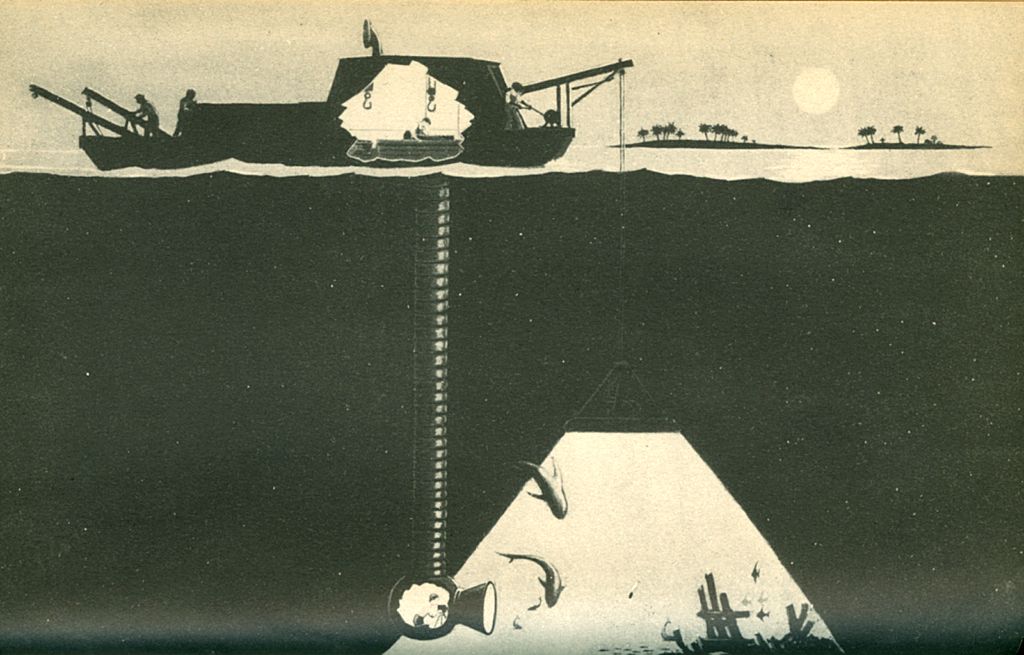
Charles Williamson was the father of John Ernest Williamson (1881-1966), an important cinematographer who made the first underwater films. Captain Charles Williamson was the inventor of a flexible arm with a coupled mitten. This flexible arm led to the development of a tube that could be lowered from a boat to the sea bottom.
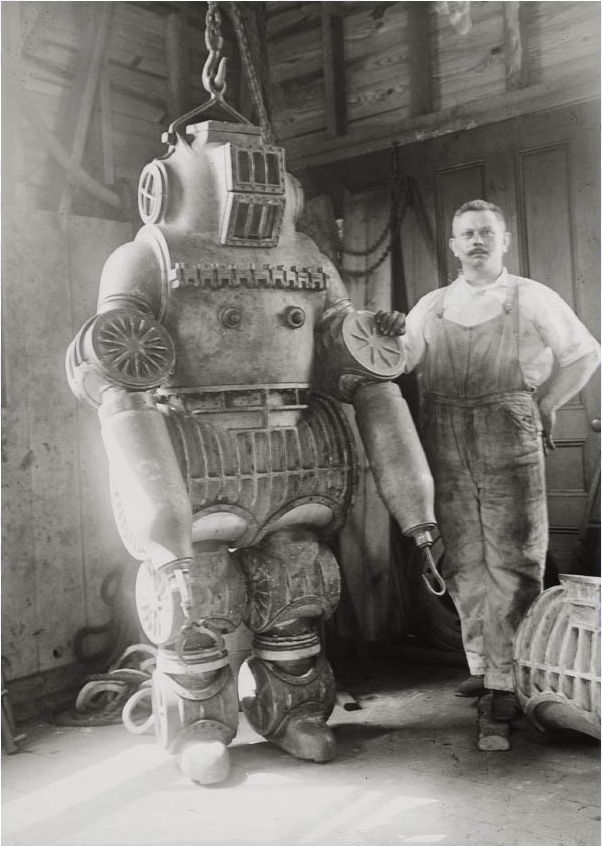
Macduffs ADS was tested in 1915 in Long Island Sound. It was made from aluminum alloy and weighted about 250 kilo. The cylindrical joints mounted on ball bearings allowed movement in one direction only. They do not appear to be watertight due to the fact Macduffee implemented a waterpump in the suit.
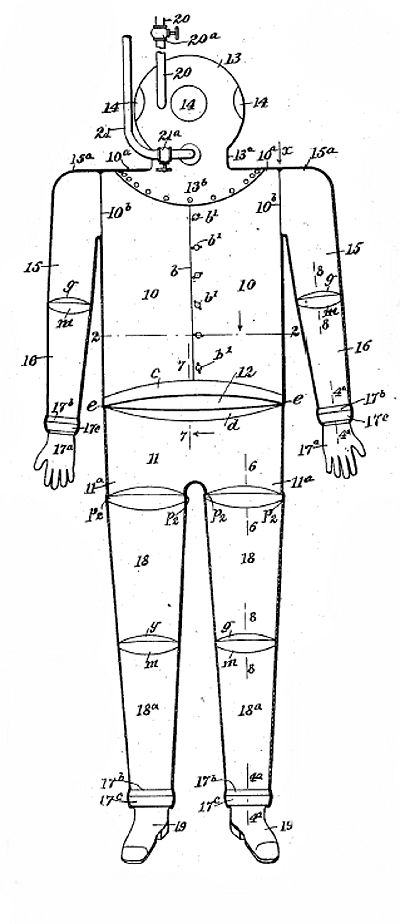
Anderson and Silver patented their suit in 1912. The suit was Attached to an air supply and was made of metal covered with an airtight and waterproof material.
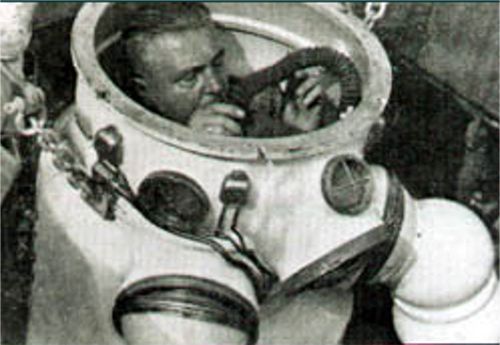
Neufeldt und Kuhnke, a German company from Kiel was the first large scale producer of atmospheric diving suits. The company obtained a number of patents and sold their suits during 27 years!
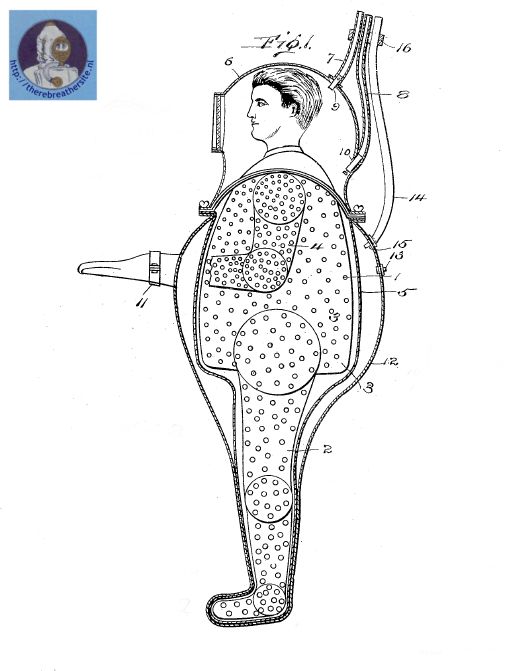
Ernest Niehoff living in Roanoke Virginia patented his suit in 1914. He called it a diving apparatus that consists of a inner flexible not waterproof metal shell.
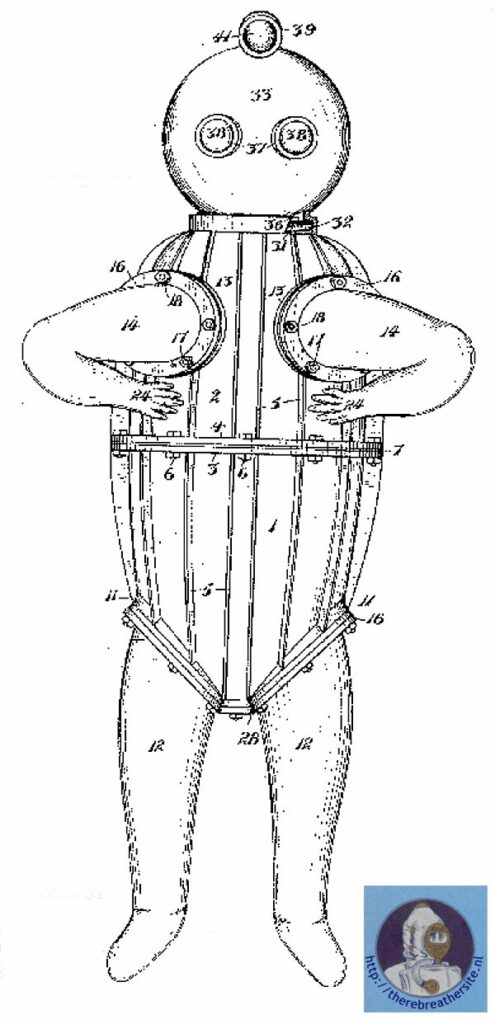
Mr. Deray lived in Sunnyvale Santa Clara USA.
He designed a suit he claimed able to dive to 45 meter.
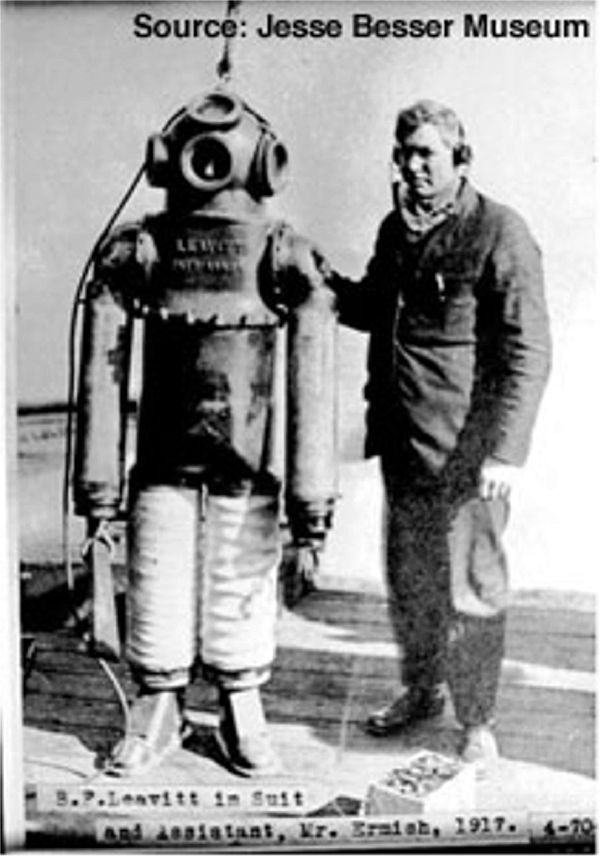
Benjamin Franklin Leavitt build another revival of spiral armouring like Buchanan and Gordon. The radius pieces of the flexible arms and legs add to the resemblance.
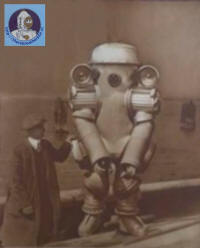
Bowdoin, 1915 (U.S.) – Harry L. Bowdoin of Bayonne, N.J., received a patent in 1915 for a new type of oil-filled rotary jointed armored diving suit. The joints had a small duct leading to the interior of the joint to allow the external and internal pressure to equalize.

William S Boyd lived in Greatkills Richmond New York in 1916. He patented a new type watertight joint and tool.
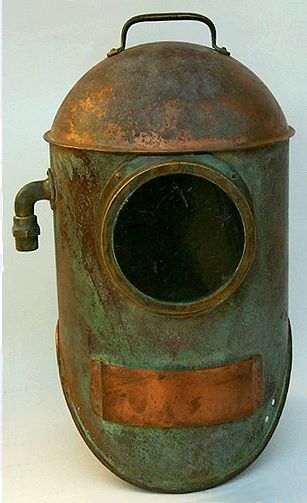
The Miller and Dunn helmets were produced by the Miller Dunn Company from Miami Florida. The helmets were used by the Navy and by civilians for many years.
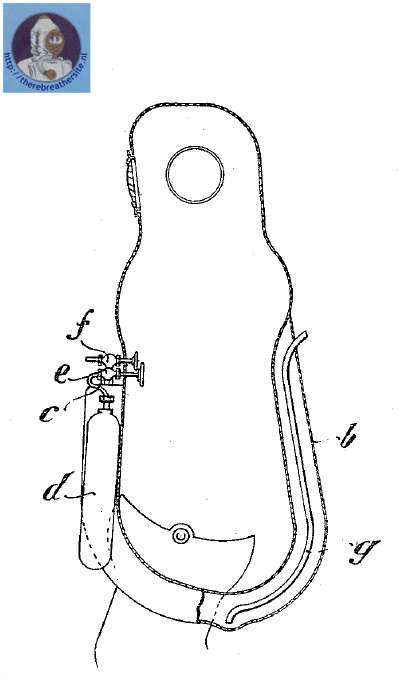
There is not much found about George Stolle. His patent was registered in 1917. He put the design in in 1914. Stolle was a citizen of Kiel Germany.In 1920 he patented another suit with F. Gall.Gall later worked for Neufeldt und Kuhnke.

F.W. Walter from New Zealand patented an improved diving suit with increased resistance to water pressure. He used metal bands and fabric for this.

In May 1922 P&O’s steamship Egypt sunk forty miles off the coast of France with a treasure of gold worth more than a million pounds sterling in her strong room. This the story about the Artiglio and Egypt
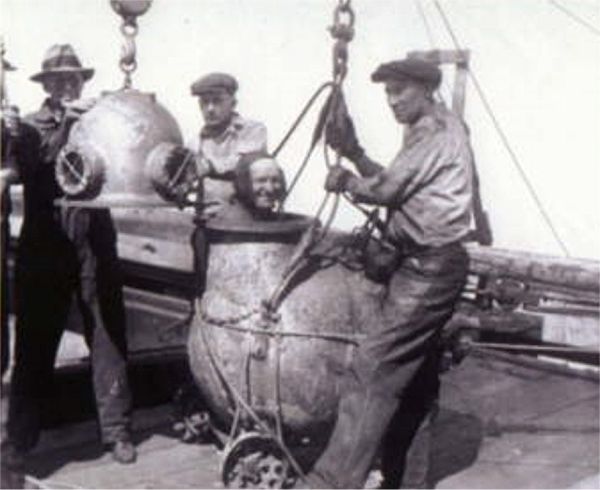
The Wiley “Bell” is not a bell. It is a atmospheric diving apparatus. You could call it a one man submarine. Carl Wiley and his companion inventor Elbert H. Wiley patented their invention in 16-12-1931.
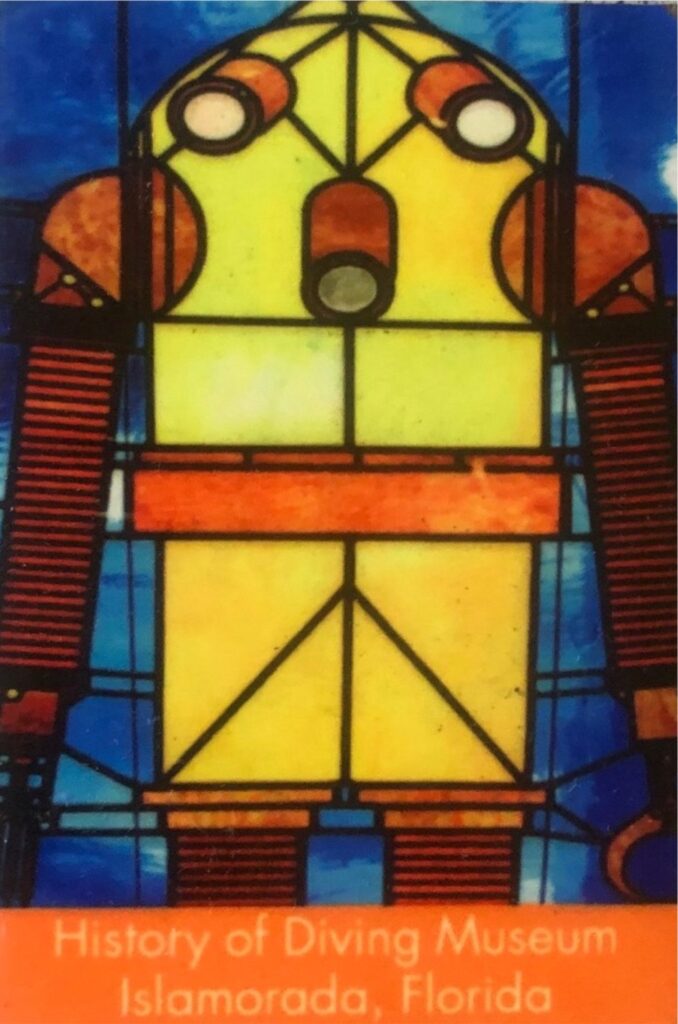
Iron Mike was built in the early 1930s by the Empire Marine Salvage and Engineering Corporation of New York City, which was headed by Thomas P. Connelly.



